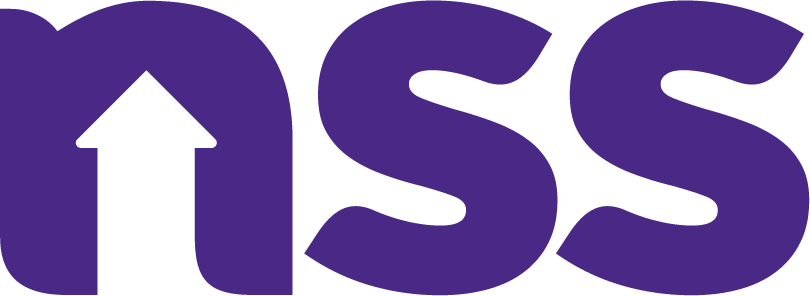Title Page
-
Document No.
-
Audit Title
-
Client / Site
-
Conducted on
-
Contract Manager
-
Region
-
Supervisor
-
Personnel
-
Prepared by
-
Report completed by:
Scope
Scope
-
The audit scope includes:
Review of documentation i.e. RAMS, Training records, compliance certificates
Inspection of site set up, welfare, vehicles etc.
Observation of site activities
Review of compliance with NSS Group policies and procedures
Objective
-
The objective of the audit is to ensure the continued health, safety and welfare of the workers and promote continual improvement within the organisations policies, processes and procedures.
Opportunities for Improvement and Breaches
-
Opportunities for improvement (OFI) - Management should consider these to improve how they plan and undertake works.
-
Minor Breach - These can be dealt with immediately on site or in communication with the designated manager
-
Major Breach - Risk of immediate or serious incident. Works to stop until corrective action has been implemented. Fully investigated within the Health and Safety system
Executive Summary
-
The safest way is ingrained in our culture and and sits in the heart of everything we do, every minute of the day. Have NSS demonstrated working the safest way during this audit?
-
Are operatives following Coronavirus policy and procedures? social distancing, required protection etc?
-
Quality of works completed?
-
Executive Summary:
-
Attach photos:
RAMS
-
Is there evidence that operatives can access the RAMS and have read & understood the RAMS for the task
-
Has a dynamic risk assessment been carried out prior to starting work?
-
Are the RAMS specific to site or are they standard general RAMS
-
Is the scope/method adequately described in the RAMS?
-
Is all key plant and equipment listed on the RAMS available on site?
-
Have the RAMS been reviewed in the past 12 months
-
Have suitable emergency rescue details been included?
Site
-
Have operatives signed in and/or received any site specific requirements (example inductions or briefings) before commencement of work
-
Are all operatives wearing the PPE listed within the RAMS
-
List operatives and PPE serial numbers:
-
Is the vehicle parked in an agreed and suitable place, with hoses and other trip hazards managed effectively
-
Have suitable and sufficient exclusion zones and/or warning signage been erected prior to the task commencing
-
If applicable, have emergency rescue provisions been put in place and communicated to employees and other interested parties, with necessary equipment available for use
-
If working at height, has the duty holders permit to work / permit to access system been implemented and documented
-
Are COSHH assessments available for substances used on site?
-
Where applicable, are flammable chemicals stored correctly, labelled and not exceeding the maximum limit
-
Have suitable first aid provisions been made available on site?
-
Are all operatives wearing allocated uniform including suitable footwear
-
Are suitable and agreed communication arrangements in place for employees and other interested parties in all eventualities
-
Has weather been assessed and deemed suitable to proceed with the task (rain, snow, frozen ground or freezing conditions, high winds, low visibility including fog, direct sunlight, glare, heat)
-
Is there adequate lighting at the point of works and in / around the vehicle
-
Are there any significant manual handling requirements for the task, and have mechanical aids been considered to mitigate risk
-
If applicable, are provisions in place to remove residual water post task to mitigate risk of slip hazards
-
Are welfare facilities available for use on-site
-
Have any slip and trip hazards been identified during the audit?
Training
-
Are operatives trained and competent to undertake the tasks as part of the works?
-
Are operative training certificates available on site or on Cascade
-
List any existing training relevant to the task:
-
List any additional training needs that may be required relevant to the task:
Vehicle
Vehicle
-
Do you want to undertake a vehicle audit?
-
Vehicles to Inspect:
Vehicle
-
Vehicle Registration
-
Driver
-
Have daily pre-start vehicle checks been undertaken by the driver?
-
Is the vehicle appear to be in good condition?
-
Is there evidence of smoking or vaping in the vehicle?
-
Are emergency provisions available in the vehicle?
- Fire Extinguisher
- First Aid Kit
- Spill Kit
- Emergency provisions missing
Work at Height & Other Equipment
-
Does the work involve Work at Height?
Abseiling
-
Does the work involve Rope Access/Abseiling?
-
Is there a level 3 rope access supervisor on site
-
What rope access anchorage has been identified and utilised on site
-
Are rope access eye bolts being used certified and in date
-
Are rope access eye bolts used in pairs and correct distance apart
-
Are mobile anchors being used certified and in date
-
Have structural steels been deemed unquestionable by the level 3 rope access technician
-
Are rope access technicians carrying out visual and tactile checks of all anchorage points prior to use
-
Have suspended access equipment been subject to a change of works process prior to use and can evidence be obtained to confirm SAE can be used as a rope access anchor point
-
Is the level 3 rope access technician first aid trained
-
Has the abseil kit been inspected by a competent person in the last 6 months
-
Are the rope access technicians using suitable edge protection where applicable
-
Are all personal items and working equipment secured or tethered with tool lanyards where applicable
-
Has the level 3 rope access technician completed the daily check sheet
-
Evidence of IRATA log book being completed within the last 14 days?
-
Has the level 3 rope access technician carried out a safety briefing and recorded this on the daily check sheet
MEWPS
-
Are MEWPS being used during this task
-
Has the LOLER thorough inspection been undertaken within the last six months, and is the LOLER certification held with the machine
-
List the MEWP including serial numbers and is the MEWP suitable for the task
-
Are emergency/auxiliary lowering controls operational and proved to be in working order (ground controls and basket controls)
-
Are the ground conditions suitable for the machine and have all hazards been identified with suitable control measures in place (manholes, underground services etc)
-
Have the environmental conditions been assessed including soft ground and weather
-
Have environmental risks been considered with suitable arrangements in place including noise and significant spills
Mobile Towers
-
Are mobile towers being used for this task
-
Has the tower been erected by in date PASMA trained operative
-
Has the mobile tower been erected in accordance with the manufacturers instructions i.e toe boards, guardrails and outriggers etc.
-
Has the competent person completed the post erection inspection?
-
Are the ground conditions suitable for the mobile tower and all hazards identified with suitable control measures in place
-
Are all castors and base plates fully in contact with the level ground and bearing equal share of the weight where applicable
-
Are the brakes in good working order and able to fully lock
-
Are all braces and handrails fitted in the correct position
-
Where applicable are outriggers in place and correctly positioned
Suspended Access Equipment (SAE)
-
Is suspended access equipment in use during the task?
-
Has the SAE been adequately maintained (6 monthly LOLER)?
-
Have operatives carried out pre-use checks on the SAE including primary and secondary controls & emergency stop button?
-
Are operatives trained to carry out SAE works on-site (part 1 and part 2 training)?
-
Are operatives aware of and comfortable with the emergency contacts following equipment failure?
-
Is the access route to the SAE adequately protected to mitigate a fall?
-
Are all personal items and working equipment secured or tethered with tool lanyards where applicable?
Other WAH Equipment & Methods
Ladders
-
Are ladders in use during the task?
-
Are all inspection records in date
-
Is the ladder suitable for the task
-
Has the operative carried out pre use checks including stiles, feet, rungs, platforms and steps
-
Have adequate measures been put in place to ensure the ladder remains stable during the works
-
Are ladders being used to access flat roof areas
-
Are employees lone working during any ladder task
-
Have ground conditions been considered including wet surfaces or frozen surfaces prior to carrying out the task
Tool Lanyards
-
Are tool lanyards in use during the task?
-
Is the tool lanyard fit for purpose (no cuts, tears, contamination, abrasions, velcro wrist attachment in working order, tool attachment point in working order)
Harness & Lanyard
-
Is a harness and lanyard being used during the task?
-
Has the harness been subject to a 6 monthly inspection by a competent person?
-
Is the harness fit for purpose (no cuts, tears, discolouration, contamination or abrasions in the webbing and stitching, no deformation, damage or corrosion to buckles and attachments, no missing web tidies)
-
Is the harness correctly fitted
-
Has the correct lanyard been selected for the task (for example arrest, restraint, positioning, double arrest or other)
-
Is the lanyard fit for purpose (length of the lanyard suitable, no cuts, tears, discolouration, contamination or abrasions in the stitching, no deformation, damage or corrosion to the connectors)
Mansafe System
-
Is a Mansafe system being used during the task?
-
Has the mansafe system been subject to a 12 monthly inspection by a competent person
Hang Out Clean
-
Are eyebolts being used as part of hang out cleaning method?
-
Are all test and inspection records in date
-
Are all point of works easily accessible and where applicable is additional access equipment sourced and used
-
Are visual and tactile checks being made to ensure each eyebolt is fit for purpose
-
Is the lanyard fit for purpose and is the employee adjusting the length of the lanyard to remain in restraint at all times maintaining 3 points of contact
Other Methods & Equipment
Pressure Washer & Steam Cleaner
-
Is a pressure washer or steam cleaner being used during the task?
-
Has a test patch been applied prior to carrying out the task to gauge distance and impact of equipment
-
Have noise levels been assessed and all interested parties agree to the use of pressure washer at the agreed timeframe
-
Has the machine pre-use checks been carried out to ensure the machine is fit for purpose (engine oil, fuel, correct hose adapter and couplings, inlet filter)
-
Is there evidence of regular maintenance carried out in accordance to manufacturers instruction
-
Is there any sign of inadequate or unsafe repairs made to the equipment
-
Can the employee adjust the pressure output or PSI of the equipment where applicable to achieve intended results without damaging surfaces
-
Is the employee demonstrating safe use of the equipment
-
Is the surface porous or non-porous
-
Has the equipment been left in a condition where an untrained or unauthorised person could operate or misuse the pressure washer
-
Is there adequate ventilation when carrying out the task
-
Is fuel stored in the correct and clearly marked container
-
Is the employee re-fuelling the equipment in accordance to manufacturers instructions and allowing time for the engine to cool prior to re-fueling
-
Is there adequate and agreed drainage to reduce possibility of a fall due to slippery surfaces
Vacuum (all types)
-
Is a vacuum cleaner being used during the task
-
Where applicable, has the vacuum been subject to a PAT test at an agreed frequency
-
Is the vacuum used with an appropriate RCD which has been tested to ensure it is fully functional
-
Are there suitable lifting straps where applicable to mitigate manual handling related injury
-
Is the employee under control of the vacuum at all times with no risk of losing control resulting in injury to the employee or other interested party
-
Is the operative near significant gradient changes or changes to ground material
-
Has the employee considered fixtures and fittings which may be damaged during the task
Conventional
-
Is conventional window cleaning equipment being used for this task?
-
Is the equipment fit for purpose and free of damage
-
Is the equipment suitable to access all areas during the task
Water Fed Pole
-
Is a water fed pole being used for the task?
-
Is the area free from obstacles which may result in difficulty accessing areas
-
Is the floor surface where the operative will be working from free of sudden gradient changes and terrain changes
-
Does the employee have to stand in a high risk area in order to carry out the work (roads, high traffic areas or other)
-
Is the vehicle parked legally with minimum distance from the point of works
-
Is the hose placed to minimise slips and trip hazards from the vehicle to the point of works
-
Is the water fed pole fit for purpose and free from damage
-
Does the employee have the correct connectors to carry out the task safely and efficiently (goosenecks etc)
KPIs
Audit Time (Hours)
-
Travel
-
On site
-
Report















